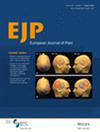Does Leptin and Insulin Levels Influence Pain and Disability in Subjects With Frozen Shoulder? A Cross-Sectional Study
Abstract
Objective
To investigate the relationship between leptin levels, insulin resistance (measured by HOMA), and clinical outcomes related to pain, disability, and shoulder range of motion (ROM) in patients with frozen shoulder (FS).
Methods
This cross-sectional study included 34 patients diagnosed with FS. Leptin and HOMA levels were measured and analysed in relation to pain and disability scores, as assessed by the Shoulder Pain and Disability Index (SPADI), along with shoulder ROM (flexion, extension, abduction, adduction, and internal/external rotation). Linear regression models were used to evaluate associations between leptin, HOMA, and clinical outcomes, adjusting for potential confounders such as age and sex.
Results
Higher leptin levels were significantly associated with increased SPADI pain (R2 = 0.114, β = 0.397, p = 0.005) and disability scores (R2 = 0.110, β = 0.425, p = 0.006), as well as an inverse association with shoulder flexion (R2 = 0.074, β = −1.088, p = 0.025), indicating reduced ROM with higher leptin levels. Similarly, higher HOMA levels were associated with increased SPADI pain (R2 = 0.096, β = 1.078, p = 0.010) and disability scores (R2 = 0.081, β = 1.517, p = 0.017), as well as combined SPADI scores (R2 = 0.089, β = 2.595, p = 0.014). HOMA also showed a significant inverse relationship with shoulder flexion (R2 = 0.061, β = −2.097, p = 0.028), suggesting that insulin resistance may contribute to ROM limitations.
Conclusion
Elevated leptin and insulin resistance levels were linked to greater pain, disability, and decreased ROM in patients with FS. These findings underscore the potential role of metabolic and inflammatory pathways in FS pathogenesis and highlight the importance of considering lifestyle interventions targeting leptin and insulin regulation as adjuncts to traditional management strategies for this condition.
Significance Statement
Elevated levels of leptin and HOMA (insulin resistance) are significantly associated with increased pain and disability in patients with frozen shoulder, as measured by SPADI scores. Higher leptin and HOMA levels are also associated with reduced range of motion, particularly in shoulder flexion. Targeting metabolic and inflammatory markers such as leptin and insulin resistance could inform new therapeutic approaches for managing frozen shoulder, with potential implications for treatment strategies in other inflammatory musculoskeletal conditions.

 求助内容:
求助内容: 应助结果提醒方式:
应助结果提醒方式:


